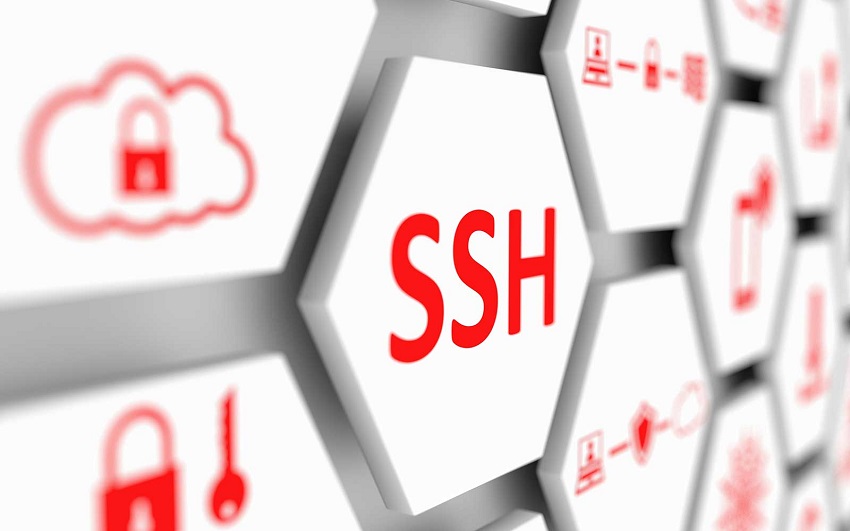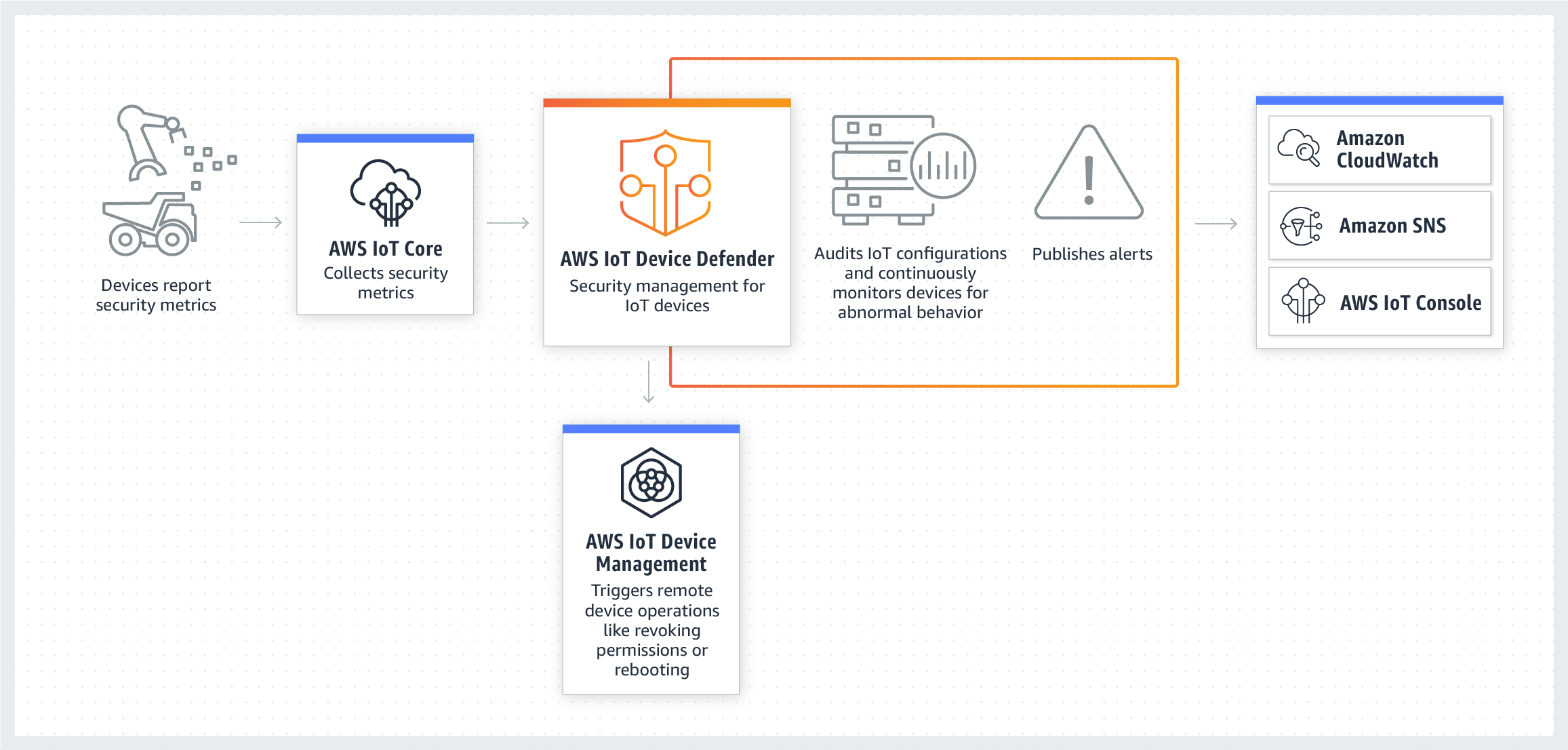Hey there, tech enthusiasts! If you're diving into the world of IoT and cloud computing, you've probably heard about remote SSH IoT devices on AWS. It's like the holy grail for developers who want to manage and secure their IoT projects from anywhere in the world. But with so many options out there, finding the best solution can feel overwhelming. Don’t sweat it—we’ve got you covered!
Let's be real, managing IoT devices remotely is no walk in the park. From security concerns to scalability challenges, there’s a lot to unpack. But here's the good news: AWS offers some of the most robust tools and services to make your life easier. Whether you're a seasoned developer or just starting out, this guide will help you navigate the best remote SSH IoT device solutions on AWS.
In this article, we’ll break down everything you need to know about remote SSH IoT devices on AWS. We’ll cover the basics, key features, security best practices, and even throw in some real-world examples to keep things interesting. By the end of this, you’ll feel like a pro ready to take on any IoT project. So, buckle up and let’s dive in!
Read also:Unlock The Power Of Best Remoteiot Ssh Free Your Gateway To Seamless Connectivity
Table of Contents
- What is a Remote SSH IoT Device?
- Why Choose AWS for Remote SSH IoT Devices?
- Top Remote SSH IoT Devices on AWS
- AWS Services for Remote SSH IoT Deployment
- Security Best Practices for Remote SSH IoT
- Scalability Considerations for IoT Devices on AWS
- Cost Management Tips for Remote SSH IoT on AWS
- Real-World Examples of Remote SSH IoT Devices on AWS
- Troubleshooting Common Issues
- Wrapping It Up
What is a Remote SSH IoT Device?
Alright, let’s start with the basics. A remote SSH IoT device is essentially an Internet of Things device that you can manage and control remotely using Secure Shell (SSH). Think of it as giving your IoT gadget a brain that you can access from anywhere, as long as you have an internet connection. This is super useful for tasks like monitoring, troubleshooting, and updating your devices without physically being there.
Now, when we talk about remote SSH IoT devices on AWS, we’re talking about leveraging Amazon Web Services to create a secure and scalable environment for managing these devices. AWS provides a ton of tools and services that make this process seamless, from IoT Core to EC2 instances for SSH connections.
But why does this matter? Well, in today’s connected world, IoT devices are everywhere—from smart homes to industrial automation. Being able to manage them remotely not only saves time but also enhances security and efficiency. So, if you’re looking to level up your IoT game, remote SSH is definitely worth exploring.
Key Features of Remote SSH IoT Devices
- Secure Connections: SSH ensures that your data is encrypted and secure during transmission.
- Remote Access: Manage your IoT devices from anywhere in the world with just a laptop and an internet connection.
- Scalability: Easily scale your IoT deployment as your needs grow, thanks to AWS's cloud infrastructure.
- Automation: Automate routine tasks like software updates and diagnostics to save time and reduce errors.
Why Choose AWS for Remote SSH IoT Devices?
Here’s the deal: AWS is one of the biggest names in cloud computing, and for good reason. When it comes to managing remote SSH IoT devices, AWS offers a suite of services that make the process smooth and efficient. Let’s break it down.
First off, AWS IoT Core is a fully managed service that allows you to securely connect and interact with your IoT devices. It handles everything from device authentication to data processing, so you don’t have to worry about setting up your own infrastructure. Plus, it integrates seamlessly with other AWS services, making it easy to build end-to-end IoT solutions.
Another big advantage is scalability. Whether you’re managing a handful of devices or thousands of them, AWS can handle it all without breaking a sweat. And let’s not forget about security—AWS provides robust security features like IAM roles, VPCs, and encryption to keep your data safe.
Read also:Telegram Wasmo Somali Your Ultimate Guide To The Trending Phenomenon
Oh, and did I mention the global infrastructure? With AWS regions all over the world, you can ensure low latency and high availability for your IoT devices no matter where they’re located. It’s like having a superpower for your IoT projects.
Benefits of Using AWS for Remote SSH IoT Devices
- Global Reach: AWS has data centers worldwide, ensuring low latency and high performance.
- Integrated Services: Seamlessly integrate with other AWS services like Lambda, S3, and DynamoDB.
- Cost-Effective: Pay only for what you use, making it an affordable option for businesses of all sizes.
- Reliability: AWS is known for its high uptime and reliability, ensuring your IoT devices stay connected.
Top Remote SSH IoT Devices on AWS
Alright, let’s talk about the good stuff—the actual devices. When it comes to remote SSH IoT devices on AWS, there are a few standout options that deserve your attention. These devices are designed to work seamlessly with AWS services, making them a great choice for developers and businesses alike.
1. Raspberry Pi with AWS IoT Greengrass
The Raspberry Pi is a fan favorite in the IoT world, and for good reason. Combine it with AWS IoT Greengrass, and you’ve got a powerful combo for managing remote SSH IoT devices. Greengrass allows you to run local compute, messaging, and data caching for connected devices, even when they’re offline.
Plus, the Raspberry Pi is super affordable and easy to set up, making it perfect for hobbyists and professionals alike. You can use it for everything from home automation to industrial IoT applications.
2. AWS IoT Button
Need a quick and easy way to trigger actions in your AWS environment? The AWS IoT Button has got you covered. This little device lets you send messages, start workflows, or even trigger Lambda functions with just a push of a button.
While it’s not as powerful as some of the other options on this list, it’s great for simple use cases like sending alerts or automating repetitive tasks.
3. AWS Snowball Edge
If you’re dealing with large amounts of data, the AWS Snowball Edge might be the right choice for you. This device is designed for offline data transfer and can also run EC2 instances, making it perfect for remote SSH IoT deployments.
With its rugged design and high storage capacity, the Snowball Edge is ideal for environments where internet connectivity is limited or unreliable.
AWS Services for Remote SSH IoT Deployment
Now that we’ve covered the devices, let’s talk about the AWS services that make remote SSH IoT deployment a breeze. AWS offers a wide range of services specifically designed for IoT, and each one plays a crucial role in creating a secure and scalable environment.
1. AWS IoT Core
AWS IoT Core is the heart of AWS’s IoT offerings. It allows you to connect, manage, and interact with your IoT devices at scale. With features like device authentication, data processing, and rule engines, IoT Core makes it easy to build and deploy IoT solutions.
2. Amazon EC2
Amazon EC2 is essential for remote SSH connections. You can use EC2 instances as secure gateways to access your IoT devices, ensuring that your connections are encrypted and protected.
3. AWS Lambda
AWS Lambda lets you run code without provisioning or managing servers. This is perfect for automating tasks like data processing, device updates, and diagnostics. Plus, it integrates seamlessly with other AWS services, making it a powerful tool for IoT developers.
Security Best Practices for Remote SSH IoT
Security is one of the biggest concerns when it comes to remote SSH IoT devices. After all, you don’t want someone hacking into your smart fridge or industrial automation system. Here are some best practices to keep your devices secure:
- Use Strong Passwords: Avoid using default passwords and make sure your SSH keys are strong and unique.
- Enable Two-Factor Authentication: Add an extra layer of security by requiring two-factor authentication for SSH access.
- Limit Access: Restrict SSH access to specific IP addresses or ranges to reduce the risk of unauthorized access.
- Regularly Update Devices: Keep your devices and software up to date to patch any vulnerabilities.
Encryption and Firewalls
Encryption is key (pun intended) to securing your remote SSH connections. Make sure you’re using strong encryption protocols like AES-256 to protect your data. Additionally, setting up firewalls to control inbound and outbound traffic can help prevent unauthorized access.
Scalability Considerations for IoT Devices on AWS
As your IoT deployment grows, scalability becomes a critical factor. AWS offers several tools and services to help you scale your IoT devices seamlessly. Here are a few things to keep in mind:
- Auto Scaling: Use AWS Auto Scaling to automatically adjust the number of EC2 instances based on demand.
- Load Balancing: Distribute traffic across multiple devices to ensure high availability and performance.
- Database Scaling: Use services like Amazon RDS or DynamoDB to scale your databases as your data needs grow.
Monitoring and Analytics
Monitoring your IoT devices is crucial for ensuring they’re performing optimally. AWS CloudWatch and IoT Analytics are great tools for tracking metrics and analyzing data in real time. This allows you to identify issues before they become problems and make data-driven decisions to improve your deployment.
Cost Management Tips for Remote SSH IoT on AWS
Let’s be honest—cost is always a factor when it comes to cloud computing. But with AWS, there are plenty of ways to manage your expenses and get the most bang for your buck. Here are a few tips:
- Use Reserved Instances: If you know you’ll need a certain number of EC2 instances for a long period, consider using Reserved Instances to save money.
- Monitor Usage: Keep an eye on your usage with AWS Cost Explorer to identify areas where you can cut costs.
- Optimize Resources: Regularly review your resources and eliminate any that are underutilized or unnecessary.
Budgeting and Alerts
Setting up budgets and alerts in AWS can help you stay on top of your costs. You can receive notifications when you’re approaching your budget limit, allowing you to take action before you overspend.
Real-World Examples of Remote SSH IoT Devices on AWS
Now, let’s look at some real-world examples of how businesses are using remote SSH IoT devices on AWS. These case studies will give you a better idea of the possibilities and inspire you to think about how you can apply these solutions to your own projects.
1. Smart Agriculture
One company used AWS IoT Core and Raspberry Pi devices to create a smart agriculture system. They deployed sensors in their fields to monitor soil moisture, temperature, and other environmental factors. Using remote SSH, they could access and analyze this data from anywhere, allowing them to make informed decisions about irrigation and crop management.
2. Industrial Automation
Another example is a manufacturing company that used AWS IoT Greengrass to manage their industrial equipment. By connecting their machines to the cloud, they could remotely monitor performance, detect issues, and perform maintenance without interrupting production.
Troubleshooting Common Issues
No matter how well you plan, issues can still arise. Here are some common problems you might encounter when working with remote SSH IoT devices on AWS, along with solutions to help you troubleshoot:
- Connection Issues: Make sure your devices are properly configured and that your SSH keys are correct.
- Performance Problems:



